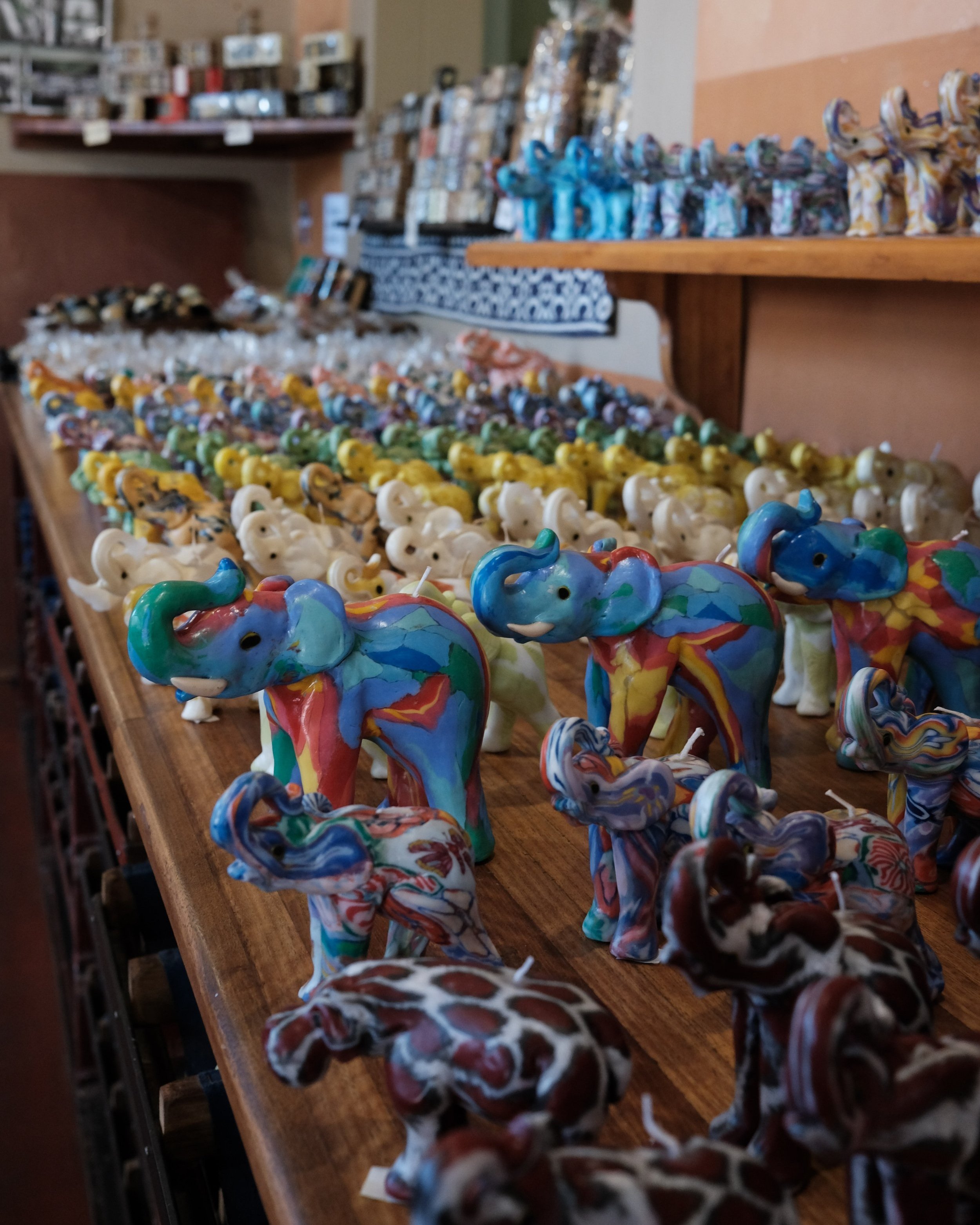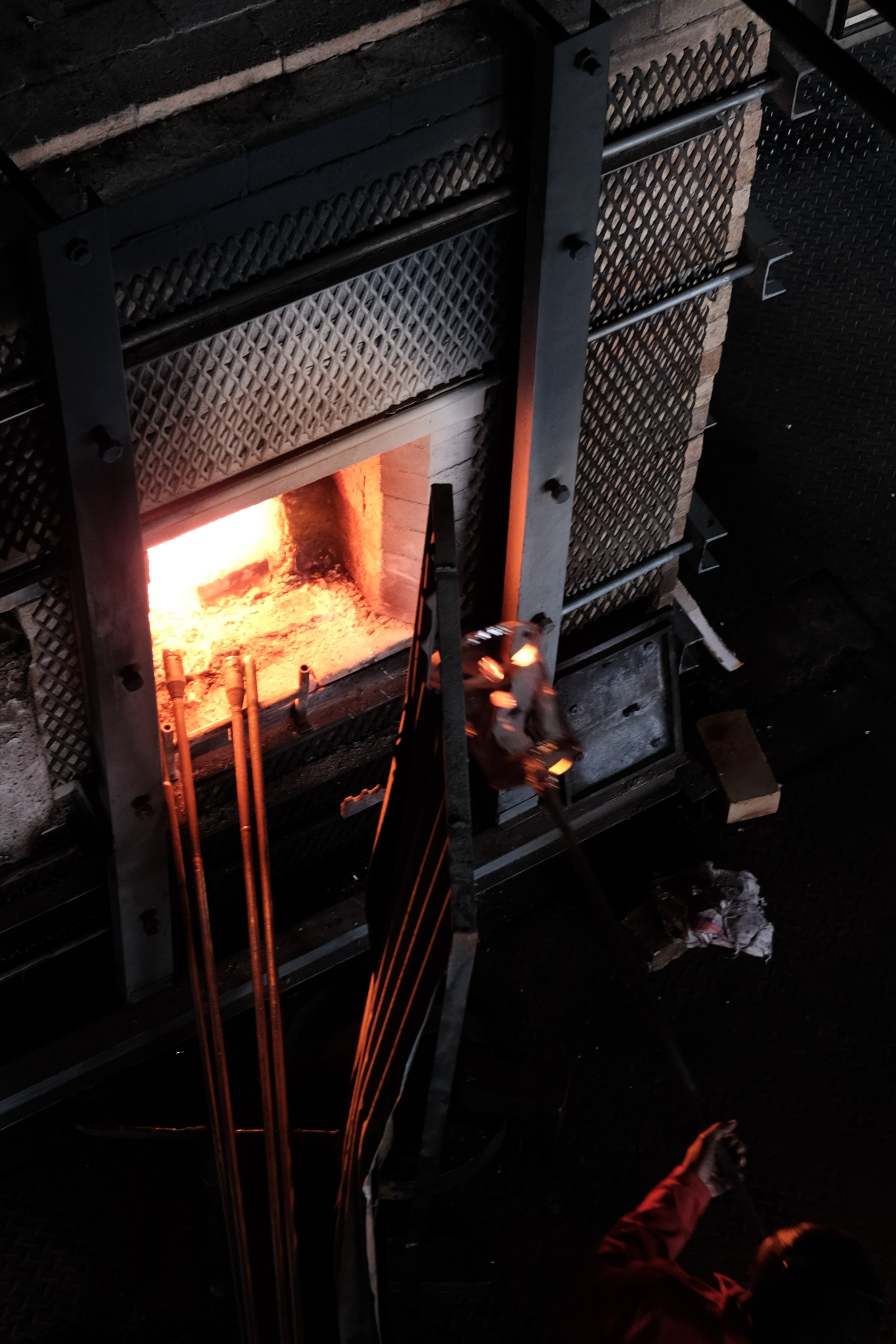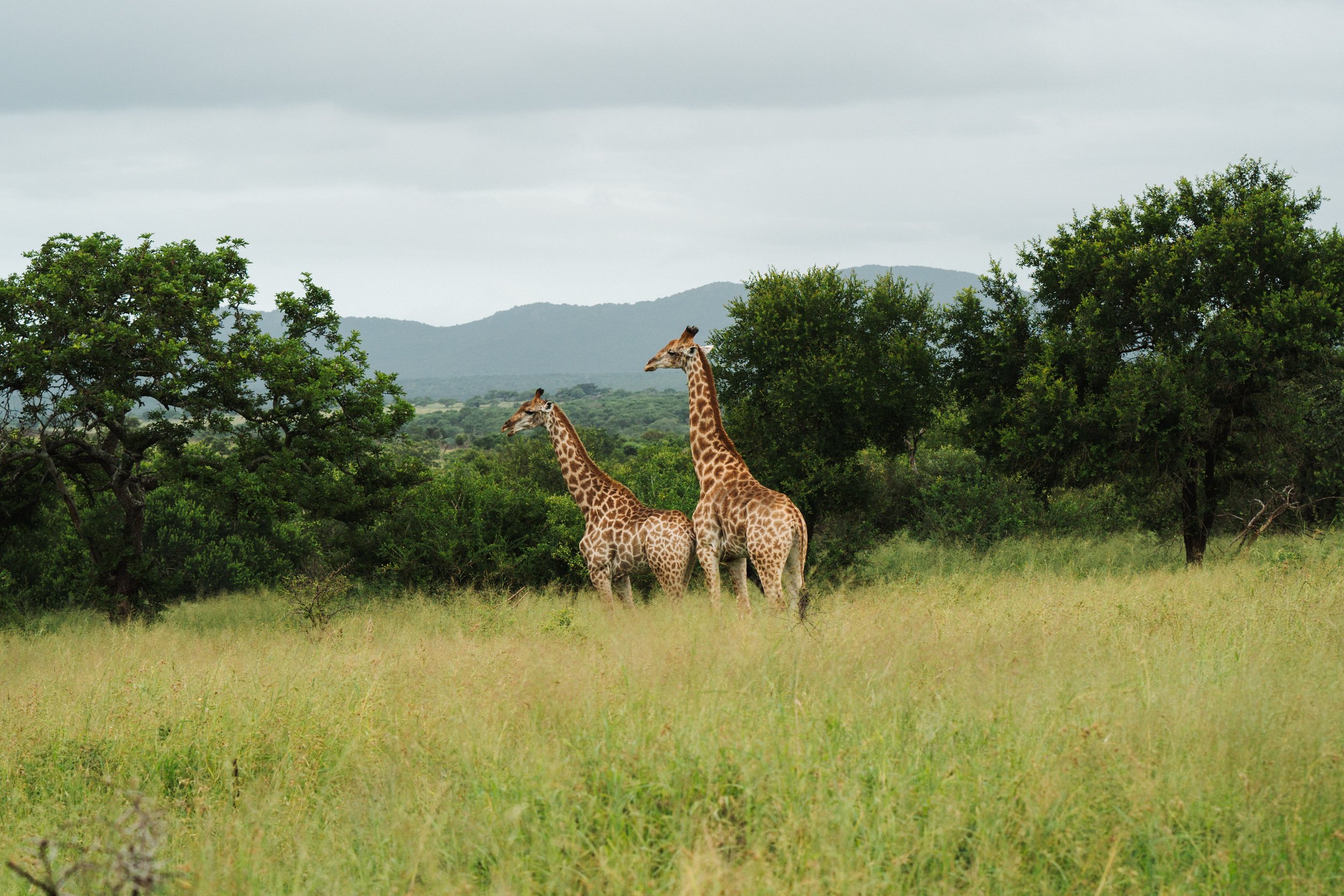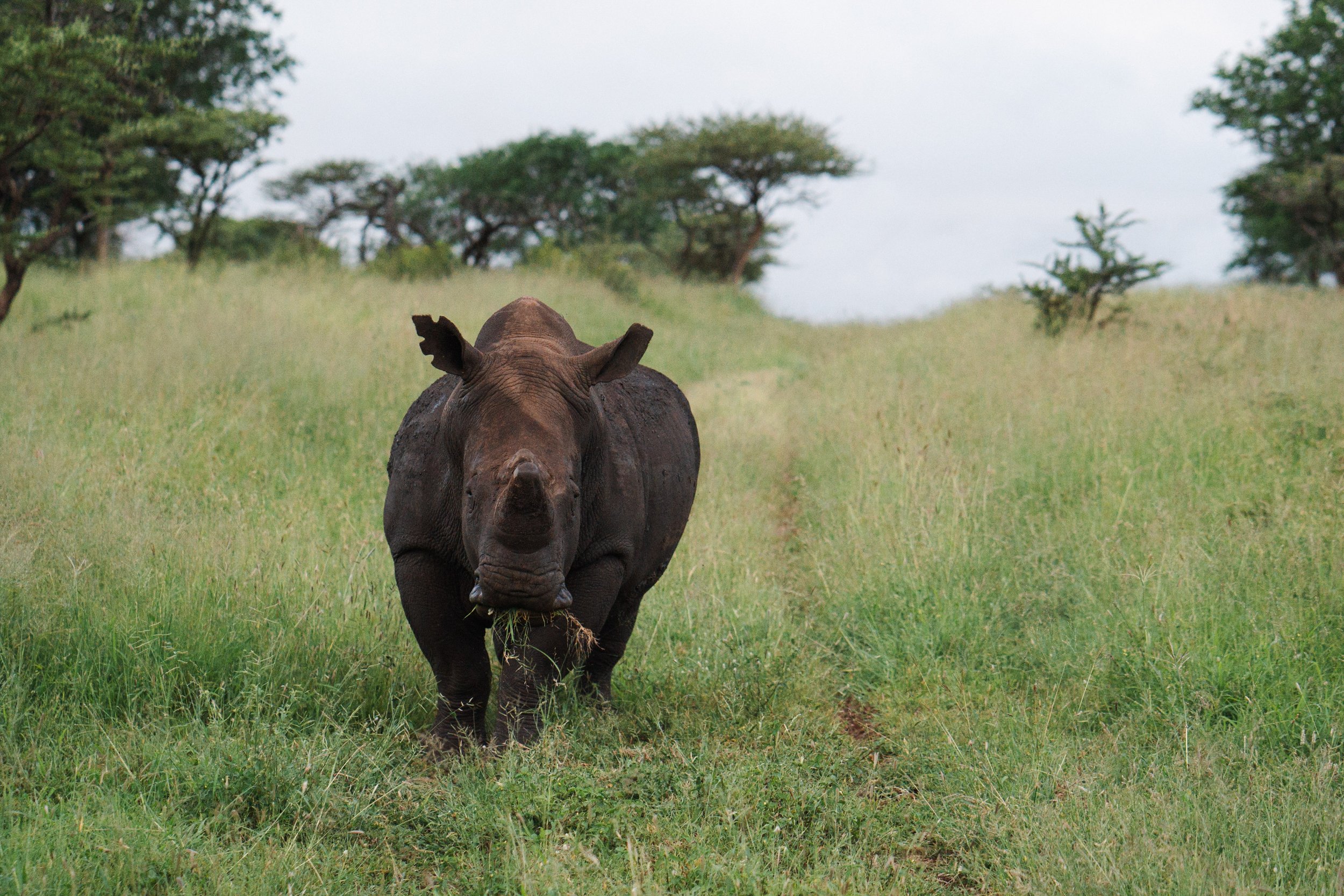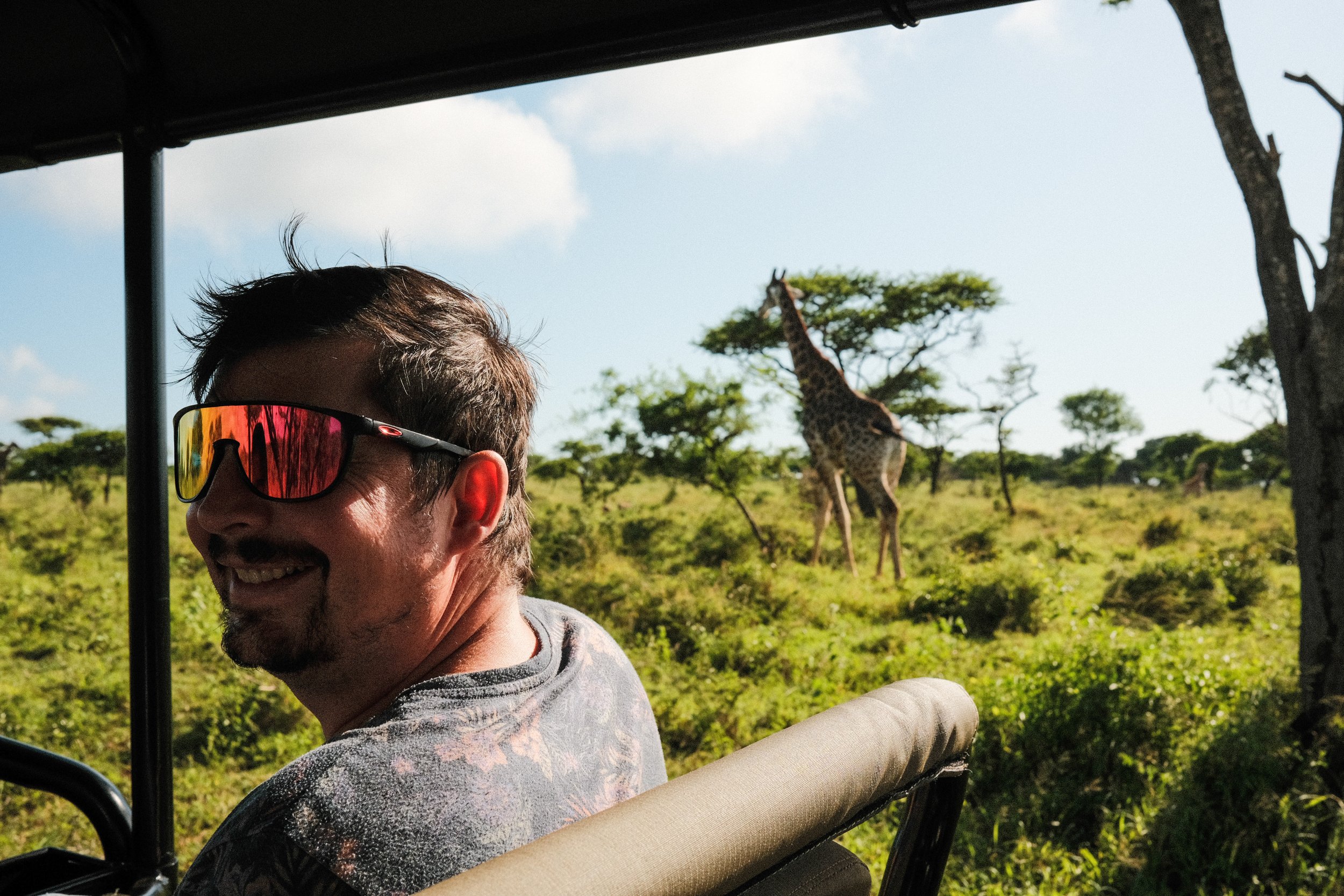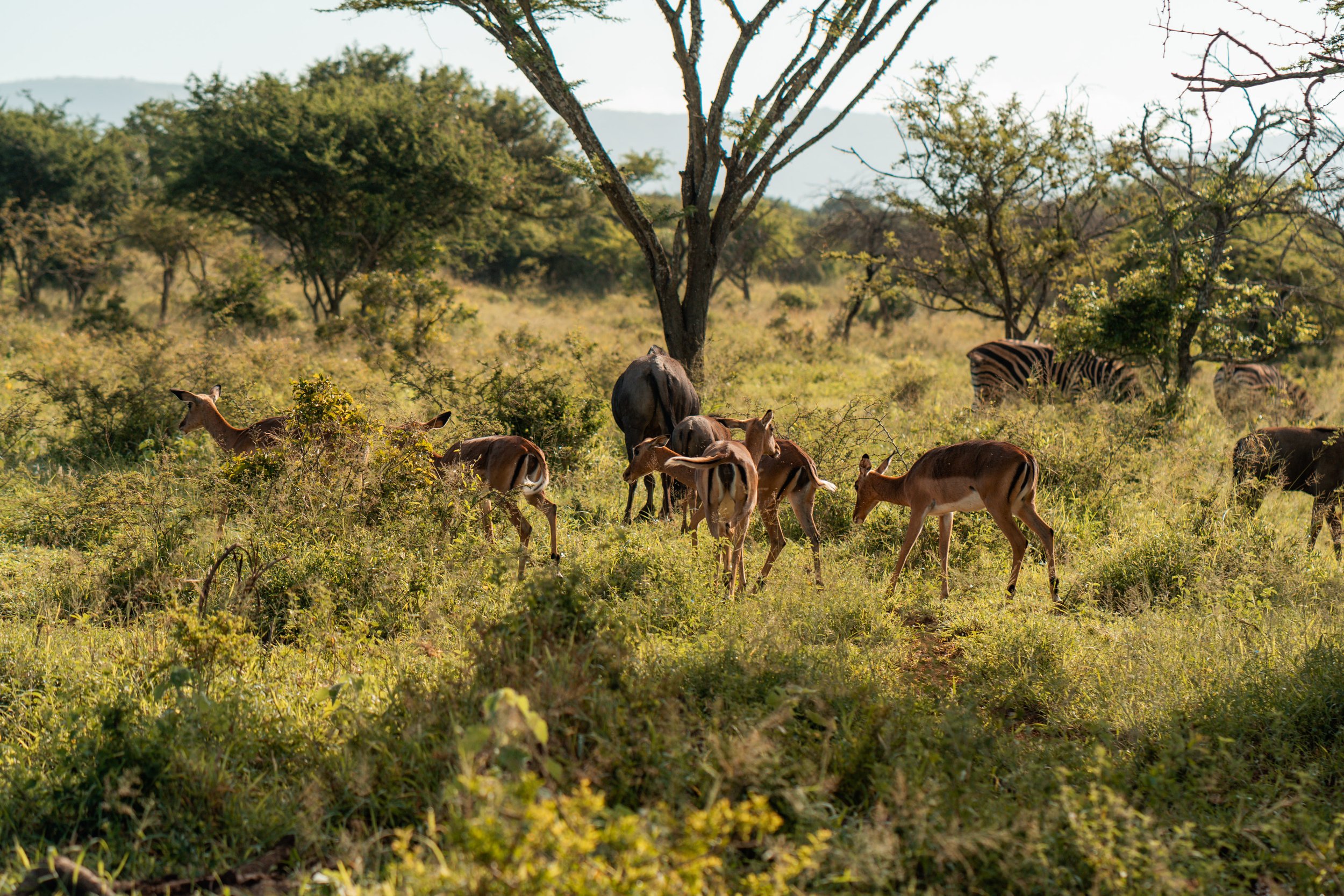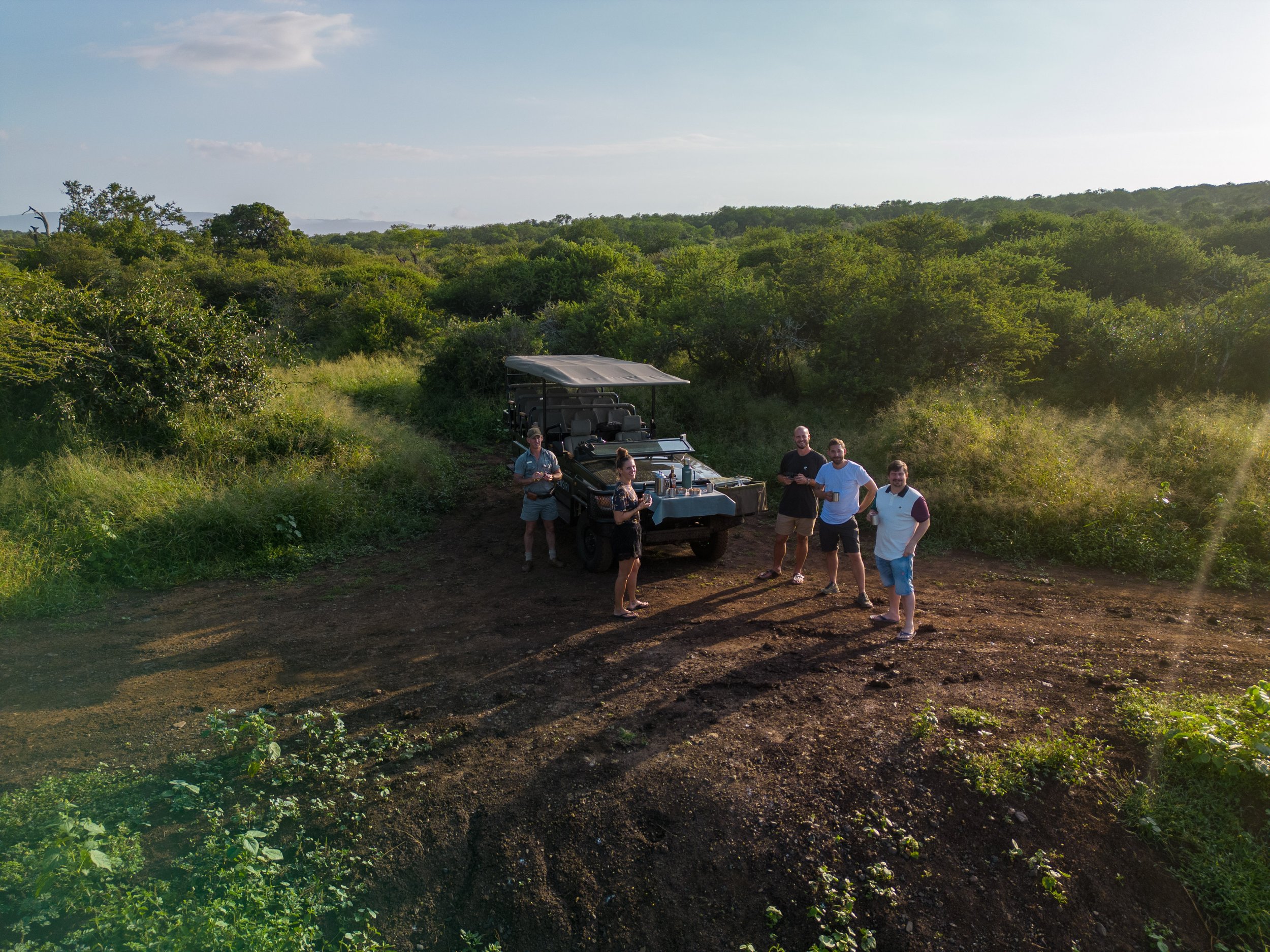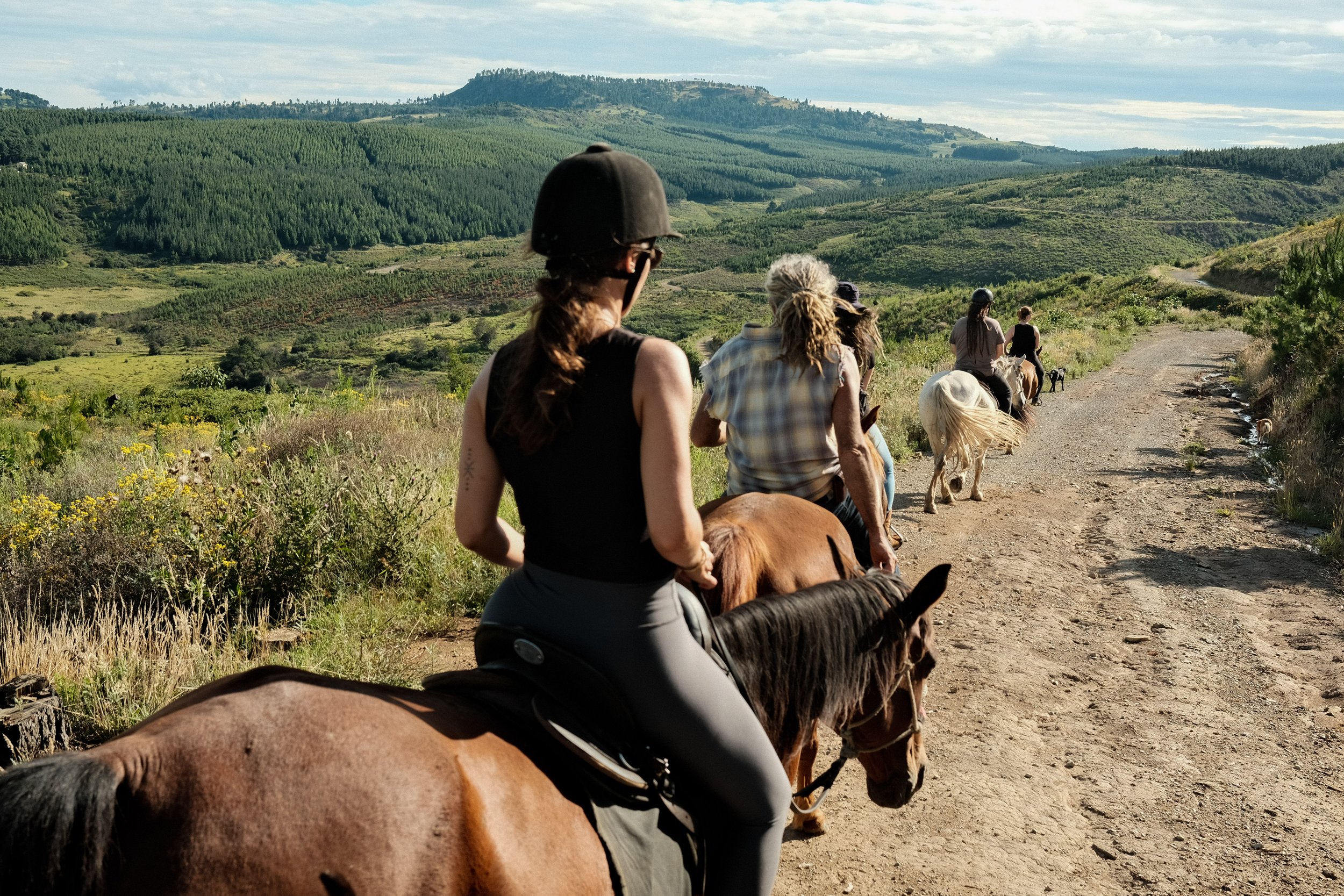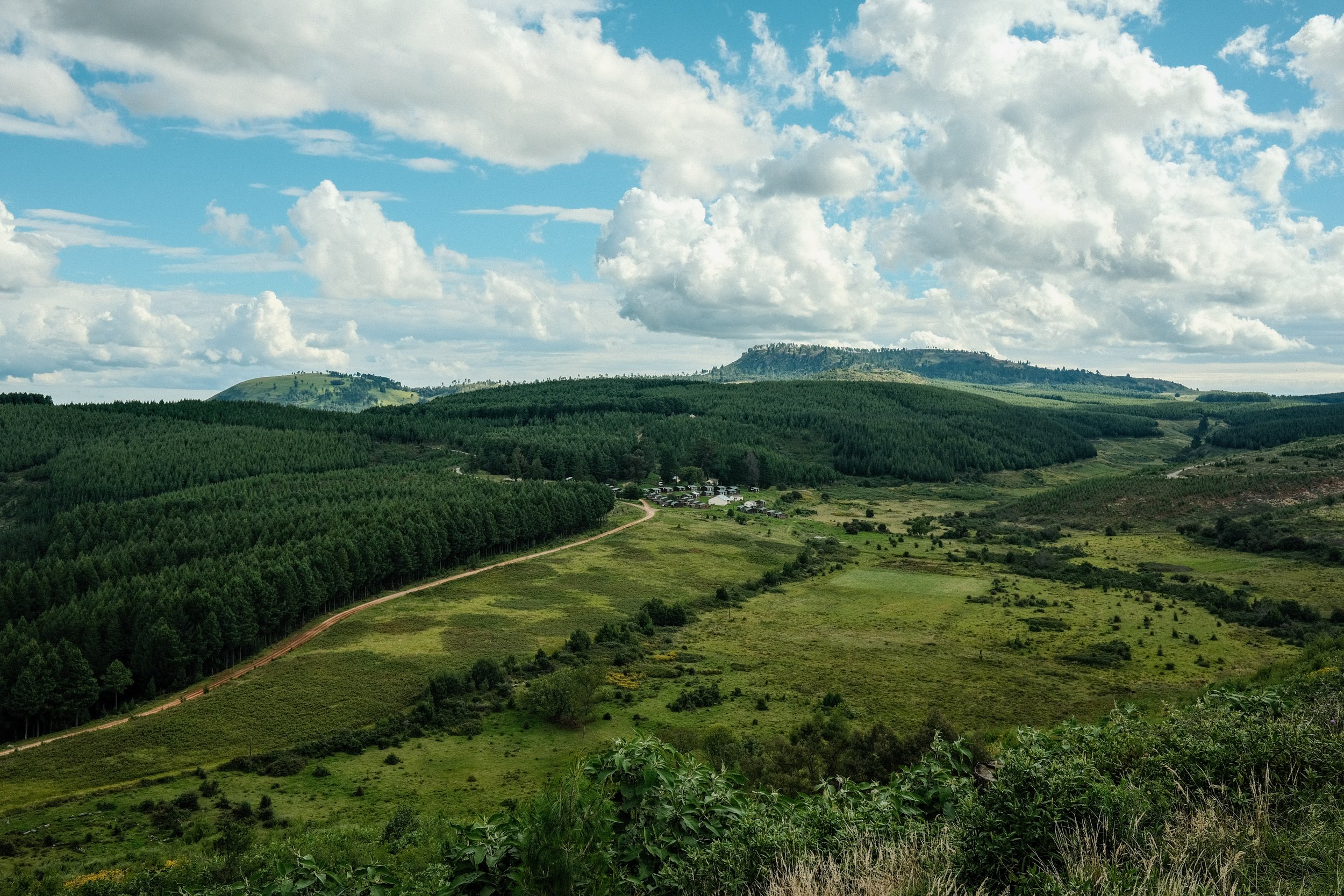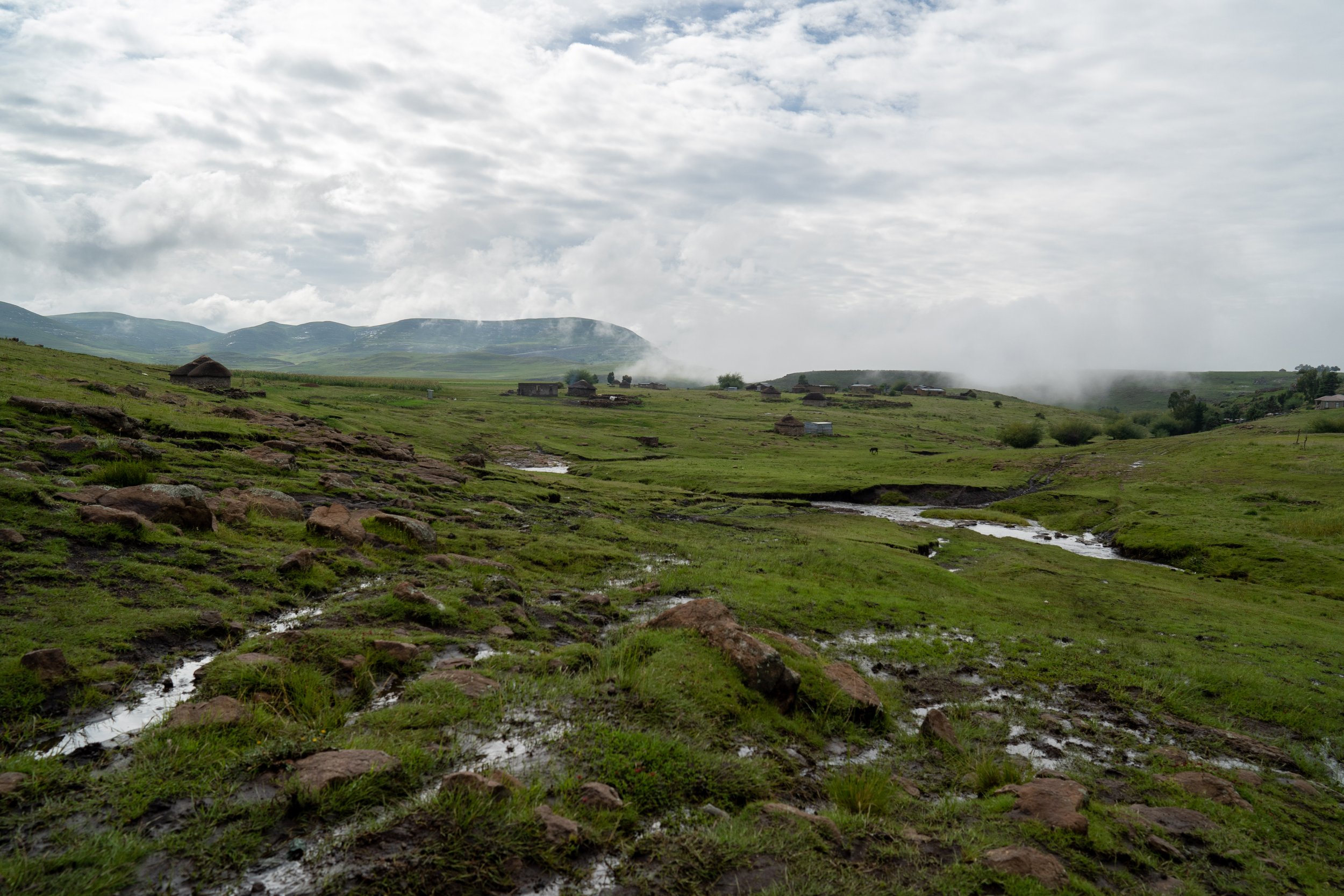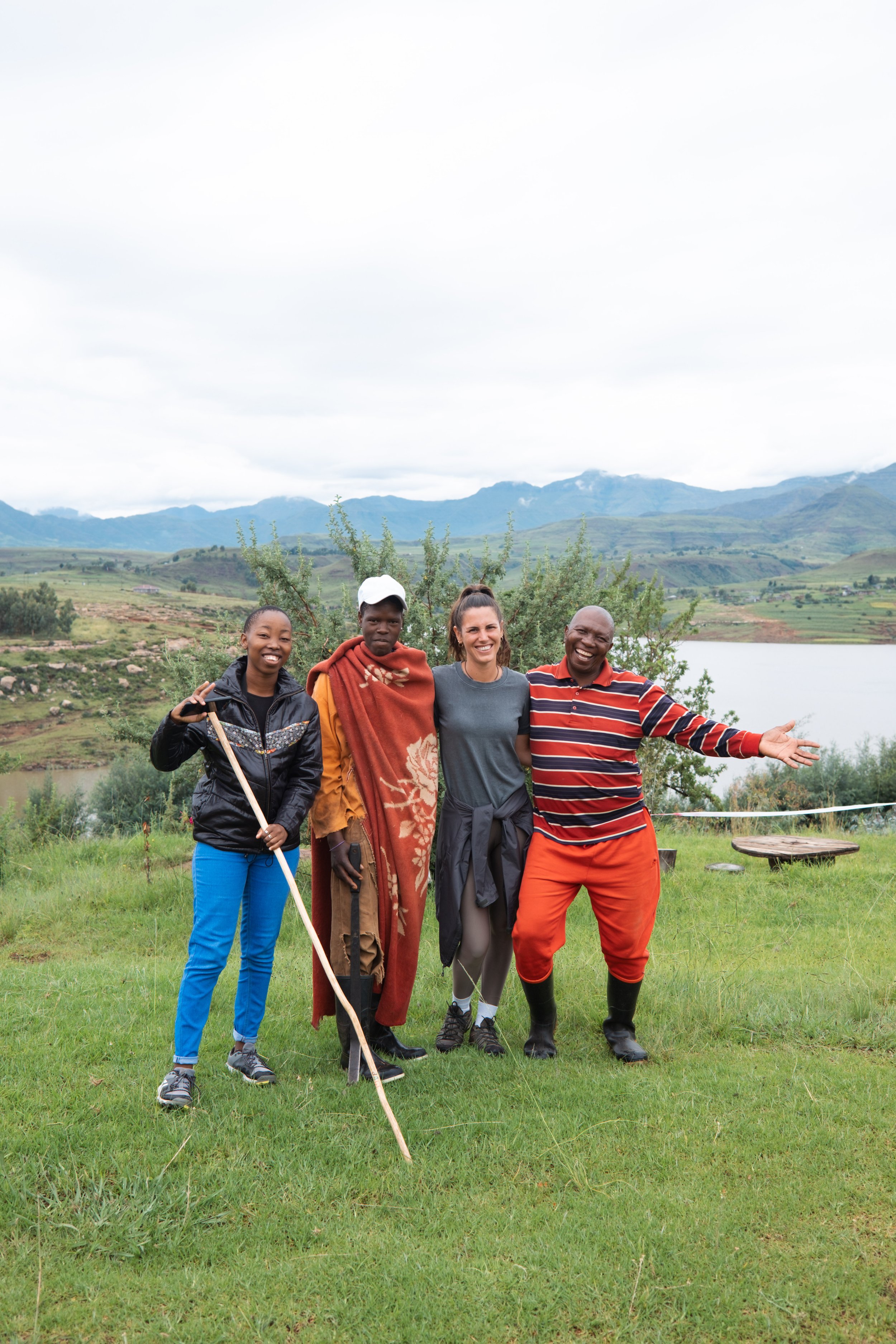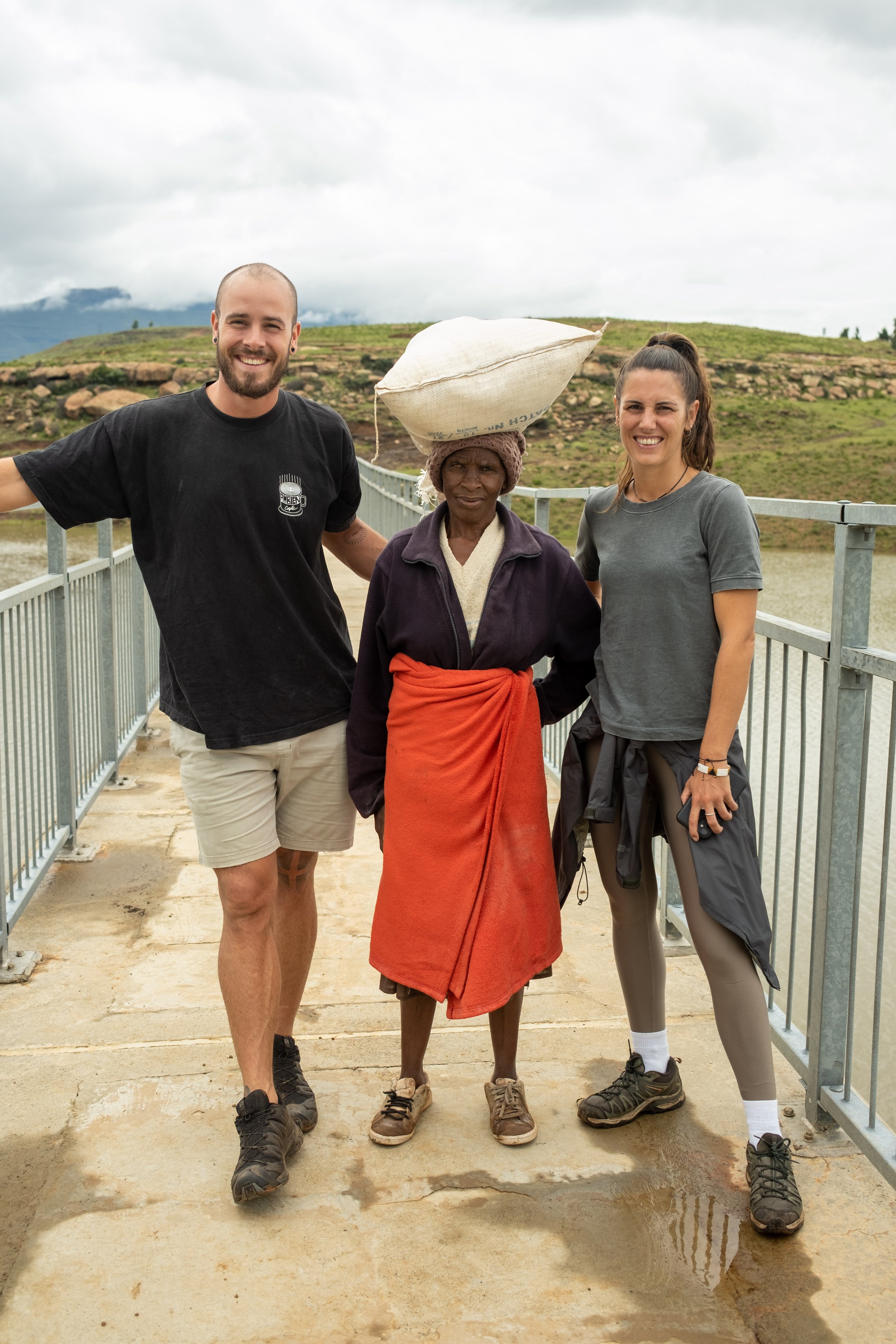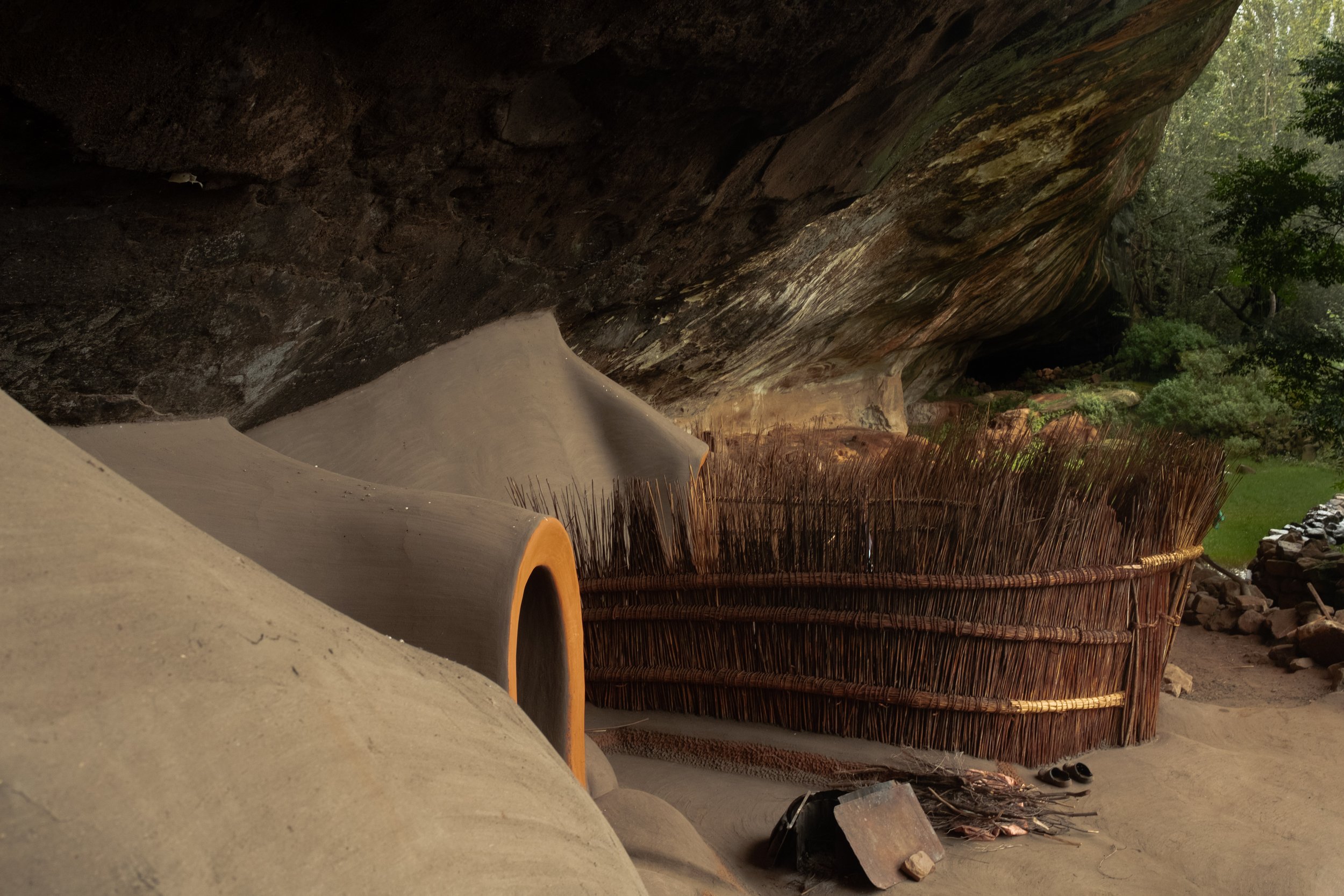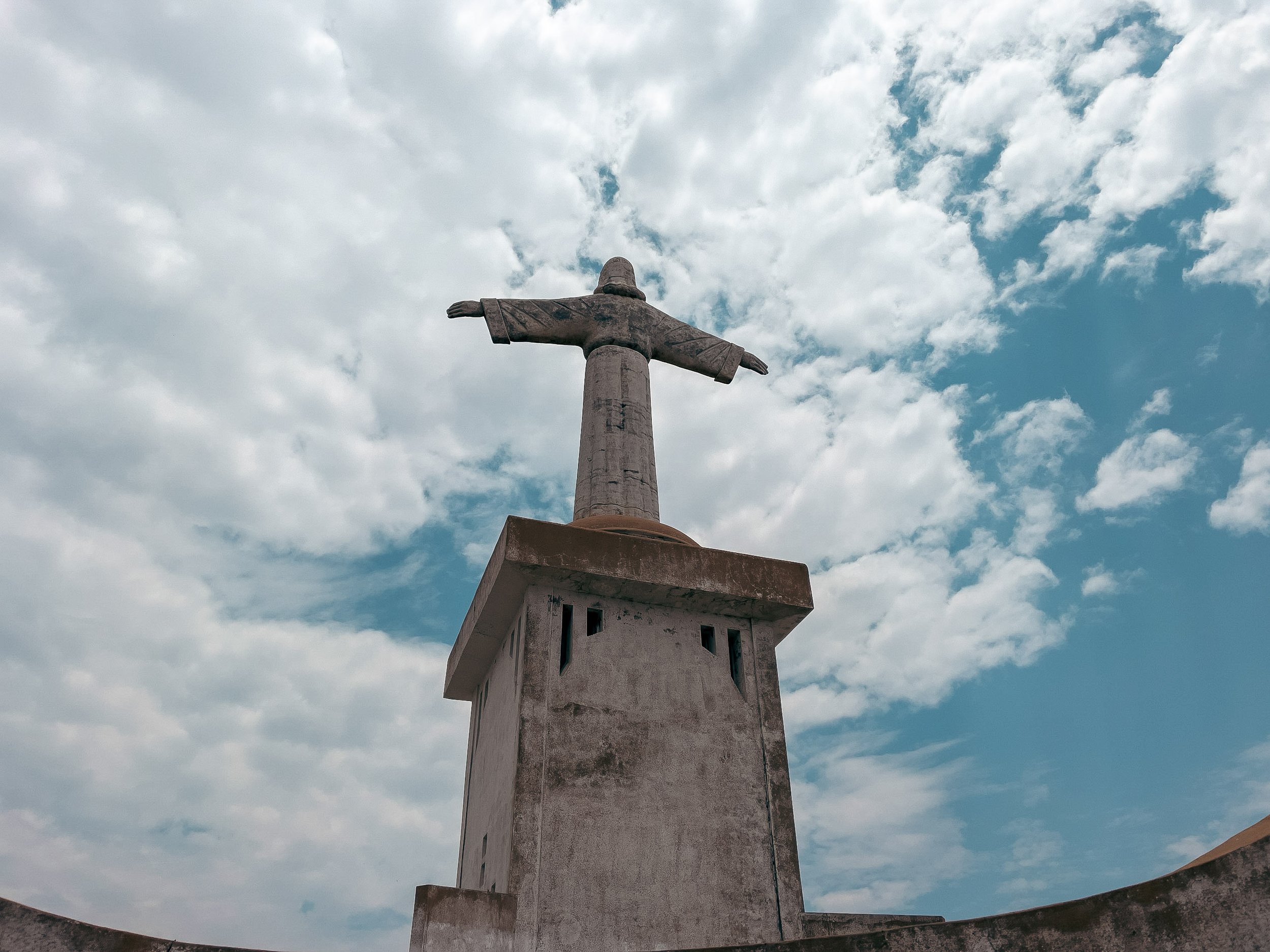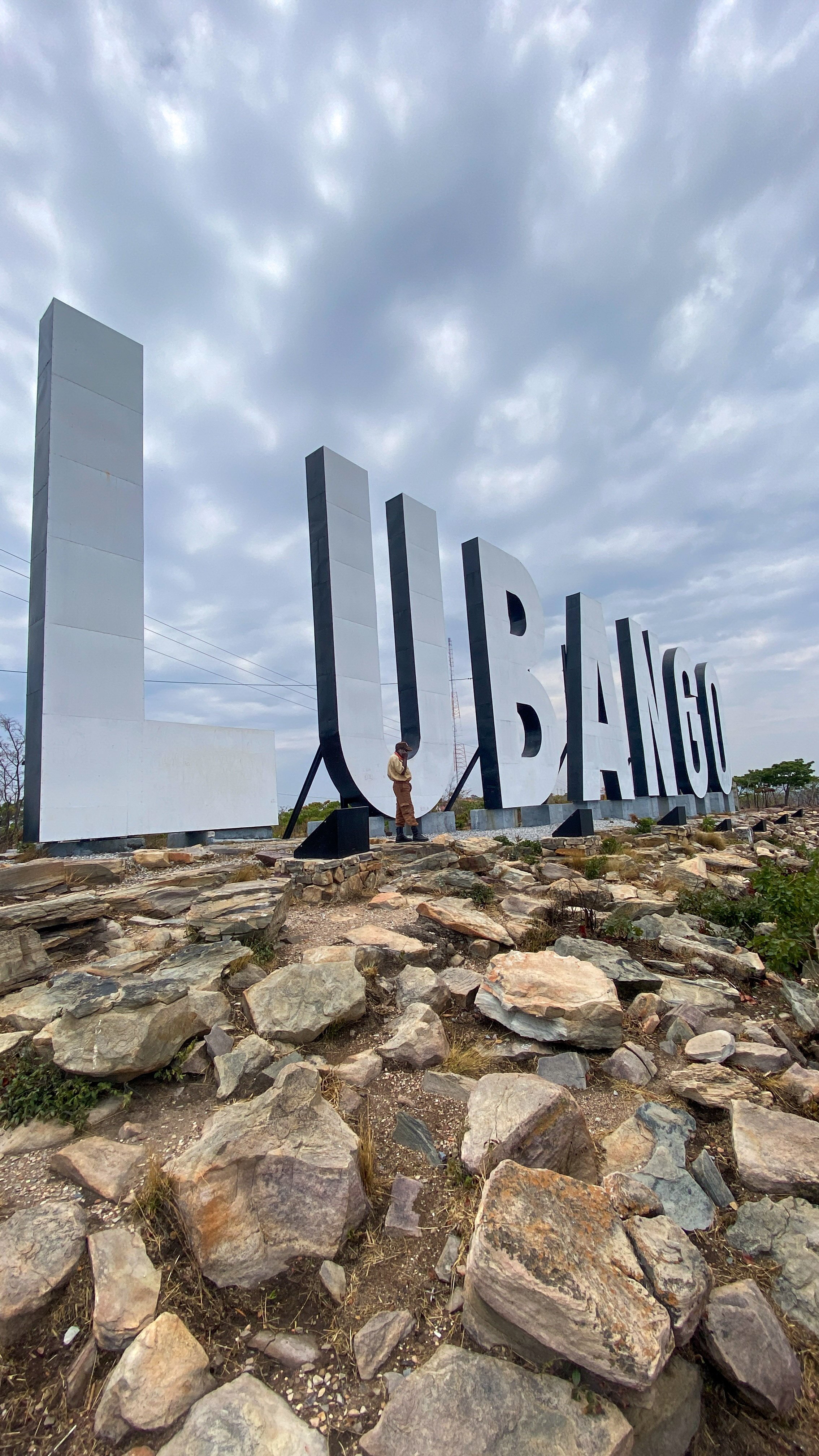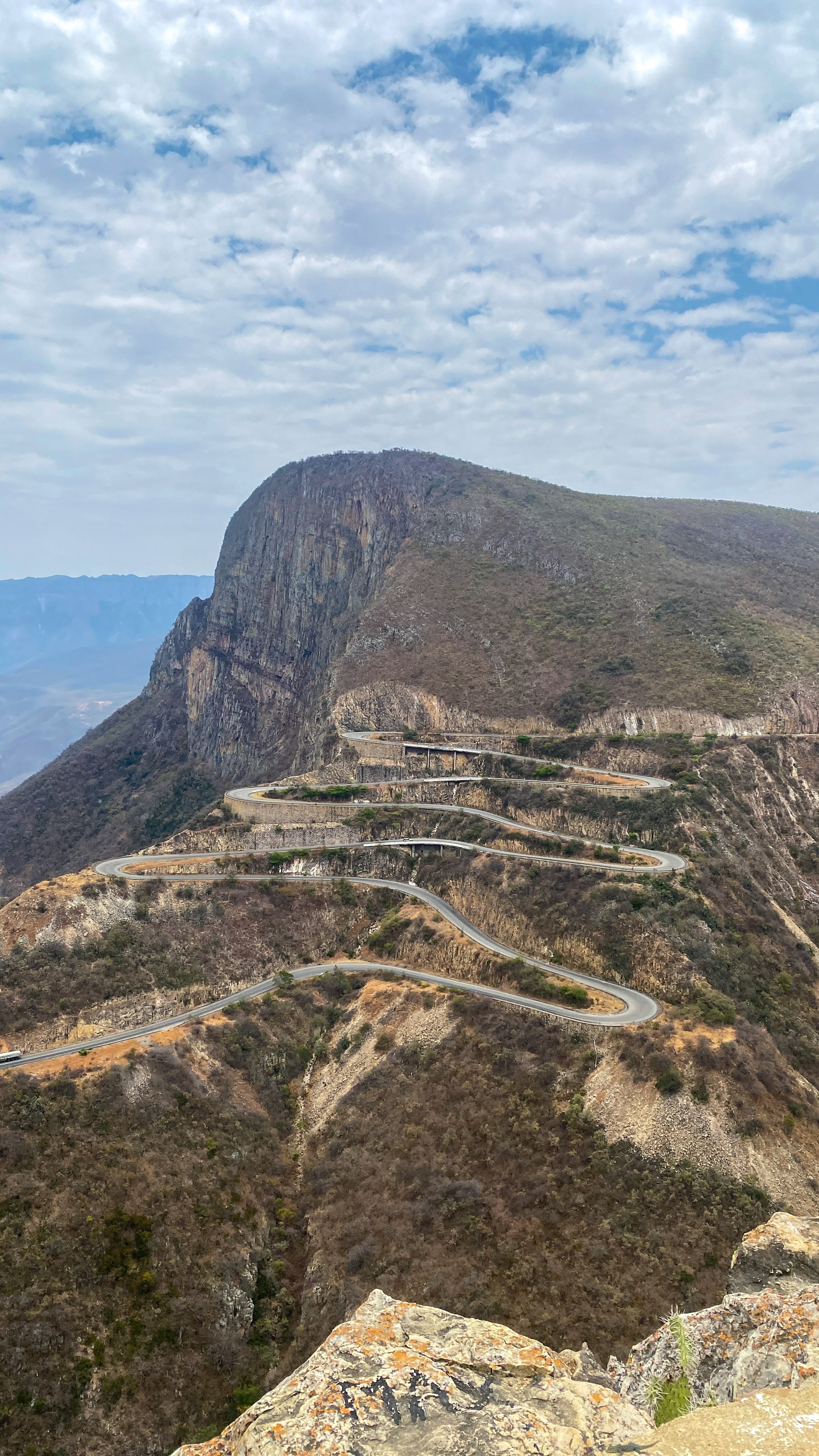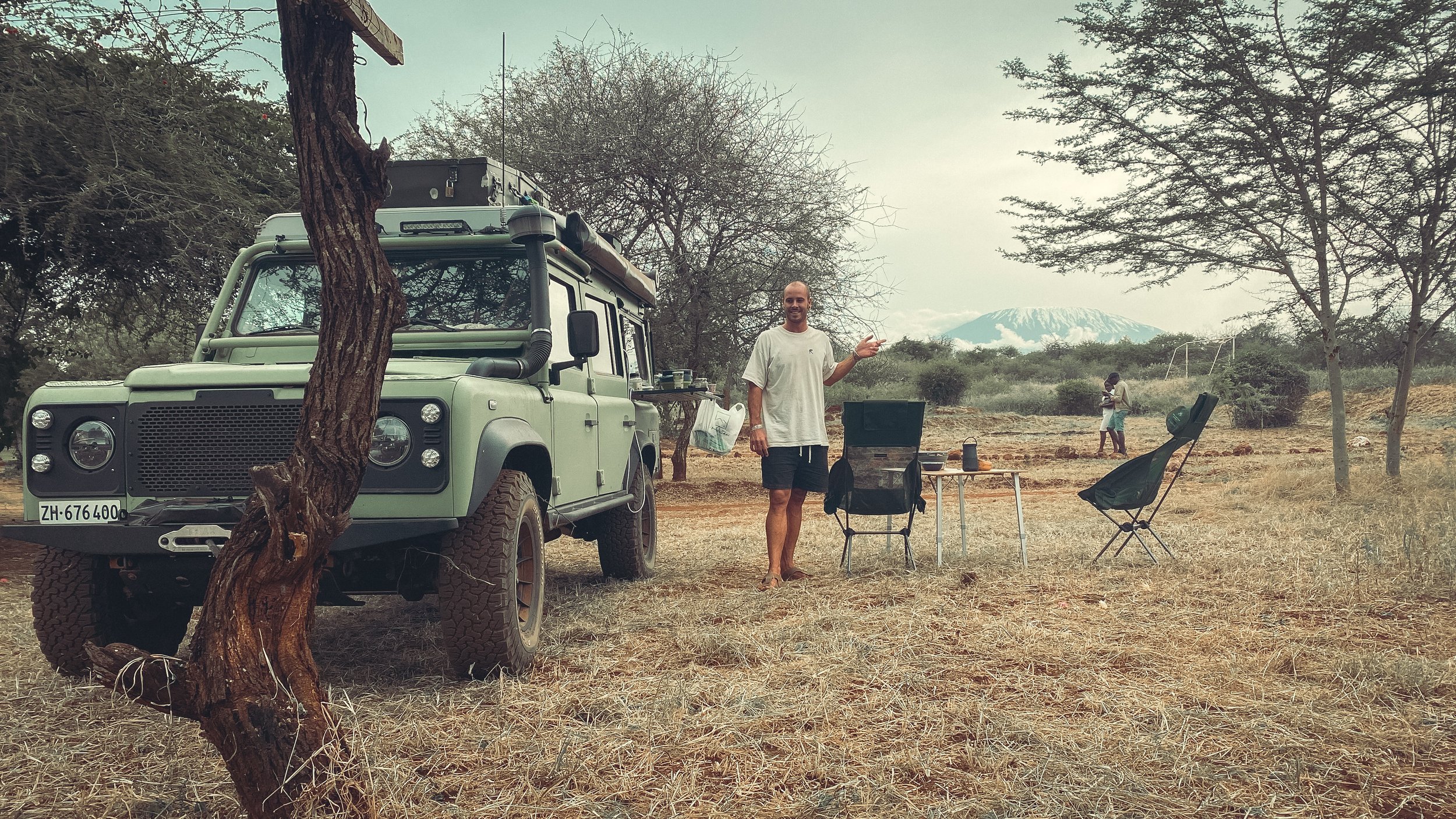Entering Guinea was quite easy, we crossed at a small border Crossing with very friendly officers. Of course, we had already applied for and received our online visa for Guinea. Other than some other travelers, we received the approval straight away, so we had no trouble entering the country. The road was funny, it was a perfect tar road in between the villages, but inside the villages, the tar road stopped and it was a bumpy ride on a dirt track. For our first night in Guinea, we found quite a cool little spot to camp along the main road. Besides the many mosquitos, no one bothered us there. (Looking back I’m thinking that this might have been the place where Tom and I were infected with Malaria, but we will never know for sure. All I know is that there were a looot of mosquitos.) The next day, we left early and continued towards a river, where we stopped to make a coffee and have a small breakfast. While we were preparing our brekky, a family passed by, of course, curious about what we were doing here. The Dad of the family hunted some kind of wiesel and presented it proudly to us. He also tried selling it to us but we declined politely. After some talks and assuring them that we did not want to buy and cook the wiesel, we continued.
The road got worse and worse, that kind of annoying tar road where you find more potholes than tar. We therefore decided to leave the main road and drive a 4x4 track called «la route café». It was a beautiful track, but since we were still traveling in the rainy season, it was at times challenging. Some parts were very muddy and I managed to get our Defender stuck in the mud quite badly. Luckily, Olga and Toby were there, and we had the necessary tools, like our winch so that we could pull ourselves out again 😉
Halfway in, we looked for a nice spot to spend the night. It was quite hard to find a spot off the track, it was only the small road and to the left and right there was either thick forest, fields or villages. We found a relatively private spot at the entrance to a village, but of course soon after we had installed our camp, all the kids from the village were around our cars and watching closely what these strangers were up to. It was quite funny to interact with them without really being able to talk to each other. Just after we finished our dinner, a thunderstorm was building up, but luckily, it just passed us. However, during the night, it rained heavily and the track was therefore even muddier the next day. We continued and managed to finish the track without getting stuck again.
Our plan was to drive through Guinea along the main road and visit a beautiful waterfall some other overlanders have told us about. It was too far to reach the waterfall in one day, so we looked for another wild camp along the main road. In the evening, Toby was talking to Martina, his wife, on the phone. She managed to get some days off work, and she, therefore, was thinking about flying to Morocco so Toby and her could drive back home and enter Europe together. It was a fabolous idea, but also, for Toby, this meant he would be under even more time pressure. Him and Martina started to plan their trip, and Toby now only had 12 days until he had to be in Marrakech. Driving to the waterfall to spend an extra day was no longer an option for him. Since we didn’t want to end our shared journey so abruptly, we decided to skip our trip to the waterfall and instead look for another nice spot to have a final evening together and celebrate the end of our journey together.
So, instead of driving to the waterfall, we continued towards the border to Senegal the next day. We already had a spot in mind that we found on iOverlander, which was right at a river close to the border. Just a few meters before we arrived at this spot, some police officers informed us that the road was blocked because a truck was stuck and blocking the whole road. This happened literally right at the place where we wanted to camp, but now there were dozens of cars, which were stuck for two days already, and therefore, the place was very busy and packed with people. It was another authentic and funny “Africa moment”: A truck gets stuck and blocks the road for more than a day and everyone just arranges themselves around it. The road quickly turned into an unofficial campsite with many street vendors selling their products. We decided to turn around and look for a place a bit more private. After some driving, we found the perfect spot close to a local village at a small river. We went for a dip in the river, enjoyed a bottle of wine and a nice dinner and we flew the drone to see if they managed to fix the truck in the meantime. Otherwise, we needed to plan a new route so Toby would make it in time to Marrakech. To our surprise, they had fixed the truck. We were so lucky! The huge lane was moving now, so when we left the next morning, the road was completely free for us to continue.
We arrived at the border to Senegal in the afternoon around 3pm, and thought, we could easily enter Senegal, where our paths would part with Toby and Olga. But of course, this didn’t go as planned. When we arrived at the border, the officer in charge informed us, that we could not leave the country with our e-visa. He explained to us that we needed to drive to Conakry (550 kilometers away!) to get an actual visa in our passport. Of course, we argued that this could not be true. First of all, we were already approved into the country with this visa and only wanted to leave, second, no one ever informed us about this rule when entering the country, nor was it written anywhere when we applied for the vias online. They officer was really annoying and unfriendly! He then informed us that it was his lunch break now that he wanted to eat (at 3pm…) and that he would take care of our issue after his break. He sat down in front of us and started eating. We were of course not very amused. When we talked to another officer, he told us that we would get the exit stamp not here but a few kilometers further down the road at the next checkpoint, so we decided to climb into our cars and drive on. Now, the unfriendly officer wasn’t amused anymore. He jumped out of his seat and called us back and we stopped the cars again. After some more arguing, he finally went back into his office, made some copies of our passports and told us we were fine to leave. We receieved the stamps in our passports at the second checkpoint and after the third checkpoint for the costums, where they stamped our Carnet de Passage, we thought we could finally leave. But now, the road was blocked because they had some kind of flag ceremony at the military checkpoint, so we had to wait again. While we were in the car waiting for the ceremony to end, I took a picture of this happening. When they were finished, we continued, and after a few more kilometers, we were stopped again at the very last checkpoint. They told us to wait, and suddenly, a car full of police officers apperaed. They were screaming at us and running towards me and asking for my phone. After they calmed down, I understood that one guy saw me taking a picture of the ceremony, and this was strongly against the law, since it was a military checkpoint. I didn’t think of that, and now, we had to drive back to the police station. They took my phone and checked all the pictures and we spent another hour talking and arguing with the guys. Finally, they made me delete all the pictures of the ceremony (which I proposed to them in the first place) and we were fine to go. When we arrived at the other side to enter Senegal, the border post was already closed, so we were forced to sleep at the border post. On the bright side, we had another evening together with Toby, but it was definitely not a the most cozy one. We didn’t feel like cooking so we got some street food at the side of the road and then went to bed. The next morning, we were able to enter Senegal, it took only a few minutes and we were in the country. Tom and I were heading straight towards the Gambia, since we wanted to visit this country and spend a few days there. Toby decided to come with us and enter the Gambia as well and take the route straight through this tiny country inside of Senegal. We entered the border, which was quite easy again. No visa was needed, the only thing that took a bit longer was to get a Temporary Import Permit for Olga, since Toby’s CDP was expired. But after a couple of hours, we were able to enter the Gambia. We looked for a nice restaurant where we could eat lunch together before Toby would continue in another direction. We hugged and sad our Farewells and then Toby and Olga drove off. It was quite a strange and sad feeling.
Tom and I decided to slow down a bit, now that we had some more time. We had spent so much time in the car the past weeks and we were looking forward to a couple of days without driving. We therefore only drove a little bit further west to Janjanbureh, where someone had recommended to us to visit a historic slave house. Unfortunately, it was not open when we arrived, but we met a super friendly local guy who runs a small campsite and he invited us to stay there. It was a very nice place, right at the river and very private. We enjoyed a quiet afternoon there and cleaned our Defender since it was very dusty inside.
The next morning, we started with a workout, something we also hadn’t done in weeks. After a coffee, we met the guy who gave us a small tour through the slave house. Compared to the one we had already seen in Ghana, this one was very small, but the story was just as bad as the one we had already heard. A truly sad part of African history.
We continued towards the beach and drove south, where we found a perfect spot to wild camp for a couple of days. Because it was the rainy season, there were no other tourists at all. We had the beach completely to ourselves together with some locals who were fishing and working out. The weather was great during the day, but every night, a small thunderstorm appeared and we listened to the rain and watched the lightening in our rooftent. We enjoyed these very relaxing days.
From there, we headed towards the capital Banjul. We wanted to explore the city and get some things done, like laundry and a proper car wash. We didn’t find a place to do our laundry, except one place that charged a fortune, so instead and also beause of the heavy rains, we started to look at Airbnbs and found a place with a washing machine for a very reasonable price. We booked the place and were able to check in immediately. We decided to go out for dinner. Banjul had some very nice restaurants and it had also been a while since we had our last date night, just the two of us. We found a nice restaurant in town, but unfortunately, during dinner, Tom started to feel unwell. It got worse and worse, so we quickly went home as soon as we finished our plates. Tom went straight to bed. He had a small fever, so we did a malaria self test, which was negative. However, he didn’t feel better at all. The fever went up and down and we did a second test after 12 hours, but it was negative again. I started to get worried becuase his fever didn’t go away, so we decided to go and see a doctor. We found a small clinic, and they took great care of Tom. He got tested for all sorts of possible diseases and received a positive malaria test…
Luckily, they also had a small pharmacy at the clinic, where we could get all the necessary pills. Of course, it was bad news that he was infected with malaria, but on the other hand we were also relieved since we now knew what was wrong and had the right medication to treat it. But it would definitely take time, so we went back “home” and extended our booking for another couple of days. Tom definitely needed to recover and feel better first, before we could continue our trip. Luckily, the treatment was very effective. He was feeling a lot better very quickly. I spent a day at the beach while Tom stayed at home in the air-conditioned room, and after two days, he felt a lot better and was ready to continue the trip. We went on the ferry to cross the Gambia river and drove towards Senegal, where we now wanted to take a few days and explore this country as well.
We were driving a beautiful road along a salt lake, but we decided to look for a campsite instead of a wild camp, so Tom would have a proper bathroom at least and in case he would be feeling worse again, we could also get a room.
Luckily, he felt fine, and we spent a night at “La Ferme de Saly” , a hotel and campsite with a huge pool area, where we went for a dip and enjoyed a cold beer before bed. The next morning, we continued towards St. Louis, an old colonial town which seemed to be a nice place to visit. We read about a photo gallery and exhibition, so we decided to go in for a cultural experience. The exhibition was great and spread throughout the whole city in various beautiful old buildings. We spent a lovely afternoon strolling through the small town and looking at the photographs.
Before dark, we left the city and continued towards the beach, where we wanted to wild camp. However, when we arrived, the beach was packed with locals who were enjoying their day off, since it was a Sunday. We parked next to a hotel and decided to chill at the beach until it would get less busy and we could set up our camp. It was very cool to mingle with everyone at the beach. There was a dog who seemed to really like us, he wouldn’t leave our side during the whole time we were staying at the beach. After sunset, most people left and we slowly walked back to the parking lot and our Defender. The security guard came towards us and asked if we wanted to stay for the night. We said yes and he offered us to open the hotel gate, so we could camp and sleep inside the gate with more privacy. We didn’t expect this at all and it was such a nice gesture of him! We cooked a small dinner and went to bed soon after. The beach dog was staying next to our car all night, and even brought two dog-friends along. We later found out that they all belonged to the hotel:-) The next morning when we got up, I was somehow not feeling great. Very low on energy but I thought maybe I just didn’t sleep that well. We packed up and offered the security guard a small tip for letting us stay here, but he refused to accept it! We greatly thanked him for letting us stay and continued our journey.
We drove towards the border to Mauritania. I didn’t really feel better at all, it actually got worse and worse, and by the time we reached the border, I barely managed to stand up and wait in line at the immigration office, I had to sit down all the time. Luckily, the border crossing was very easy and relatively quick. Tom managed everything he could on his own. The visas for Mauritania, we received on arrival against a payment of 55 Euros (it was much cheaper to pay in Euros than in Mauritanian currency). Theyalso didn’t accept our Carnet de Passage, and we had to pay for a temporary import permit, but it was not a problem and also a straightforward process and not very expensive. Soon, we were ready to enter Mauritania. Our first destination was Nouakchott, the capital, where we planned to stock up for a few days in the desert. But by the time we reached the city, I was quite sure that something was wrong. And after Tom just had malaria, we figured we best don’t lose time and go straight to a hospital. We found a clinic and I told them my symptoms. I got tested for malaria and I was positive. They gave me a prescription with all the medication which I easily received at a pharmacy and told me to come back the next day for some further tests. Unfortunately, everyone at the clinic was only speaking French, and even though I do know some French, it was rather hard for me to understand all the medical terms and explanations and why I had to come back the next day.
We decided to not camp and look for an Airbnb instead, since it was crazy hot and I just wanted a cooler place to get some rest. Unfortunately, getting a sim card and internet was another mission in Mauritania. Apparently, it used to be very easy to get a sim card here, that’s why a recent terror attack was planned by using Mauritanian sim cards. Because of this incident, they had to change the security measures to get sim cards and now it was almost impossible to buy one without a local passport. We drove to a campsite in town we found on iOverlander, where they had wifi, and explained our situation. The guys there were super helpful. They let me rest in their restaurant, which had comfy mattresses on the ground (a very common thing in Mauritania) and Tom was allowed to use their wifi and could check for a place to stay. He found an apartment which was rented out by a French family. They were super nice! We were able to check in right away and even got a small discount. They recommended another international clinic where the doctors could speak English, in case we needed further assistance for my malaria treatment. We were both very relieved when we arrived at the apartment and finally got to rest. It was another busy border crossing day, but me being sick made it even more exhausting for both of us.












































